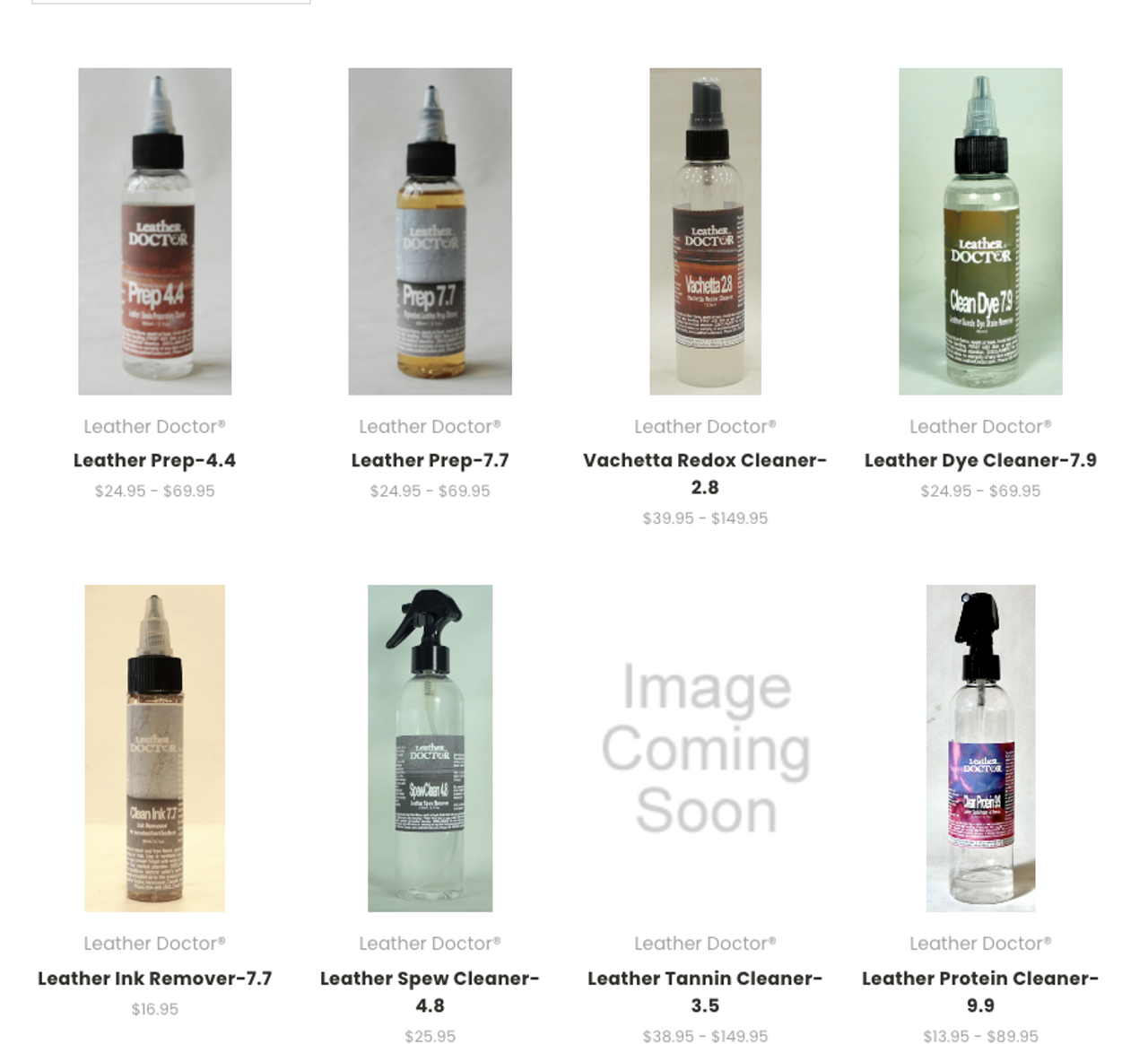-

Leather Strong Prep Cleaner 7.7
$24.95 - $223.95 -

Leather Soft Prep Cleaner 4.4
$24.95 - $223.95 -

Vachetta Leather Browning Treatment 2.8
$24.95 - $223.95 -

Leather Protein Stain Remover 9.9
$13.95 - $79.95 -

Leather Dye Transfer Stain Remover 7.9
$24.95 - $237.90 -

Leather Ink Stain Remover 7.7
$24.95 - $262.85 -

Leather Verdigris Stain Remover 1.3
$9.95 - $93.95 -

Leather Tannin Stain Remover 3.5
$9.95 - $93.95 -

Leather Tarnish Stain Remover 1.3
$9.95 - $93.95 -

Nubuck Water Stain Remover 1.5
$25.95 - $259.90 -

Leather Water Stain Remover 1.6
$23.95 - $257.90 -

Suede Water Stain Remover 1.7
$25.95 - $259.90

Leather and Suede Stain Remover
How to Identify Leather Stains?
Stain identification is crucial for effective treatment and is based on six key factors:
Appearance, Odor, Color, Feel-of-Hand, Location, and Buildup or Absorption.
Appearance
- Observing how the stain looks can indicate whether it is a spill, rub-on, penetration, or surface deposit.
- Some stains may cause dye or finish damage, revealing changes in the leather’s color or texture.
Odor
- Smelling the stain can help identify its source.
- Common odors include:
- Moldy (fungal growth)
- Smoke (fire or cigarette exposure)
- Putrid (decaying organic matter)
- Ammonia (urine contamination)
Color
- Color provides a clue to the staining substance but can change over time due to oxidation.
- The leather’s natural color may also influence how the stain appears.
- Red stains: Could be from wine, blood, lipstick, nail polish, or beverages.
- Blood stains: Can oxidize and shift from red to tan, then to black.
Feel-of-Hand
- Touching the stain helps determine its type:
- Sticky: Likely from candy, beverages, or sugary substances.
- Brittle and stiff: Could be nail polish, paint, or shellac.
- Greasy smear: Often caused by lipstick, oils, or butter.
Location
- The stain’s location on the leather provides hints about its origin.
- Headrests & armrests: Usually stained by body oil, sweat, and grease.
- Seat cushions: Often show food or beverage spills.
Buildup or Absorbed
- Stains can be surface-level (built-up) or deeply absorbed into the leather.
- Built-up stains (common on pigmented leather) include paint, food residue, and ink.
- Absorbed stains (common on nubuck, aniline, and unfinished leather) include wine, tea, and coffee.
- Combination stains: Some stains contain both absorbed and surface elements, such as lipstick, ink, and mustard.
- Protein-based stains: Examples include blood, dairy, and egg-based spills.
- Oil-based stains: Often come from grease, butter, and lotions.
- Colloidal stains: May require specialized treatments.
Additional Considerations
- Sweat stains can chemically alter leather, causing tackiness (when dry) or sliminess (when wet).
- Dye stains may show up when wiping with a white towel—this indicates color crocking.
- Fatliquor leaching (spew) appears as a milky film and causes leather to become stiff and prone to cracking.
By carefully identifying stains, you can apply the appropriate Leather Doctor® solutions to restore leather to its original beauty.
